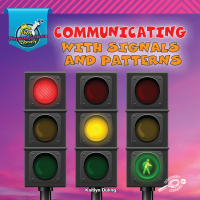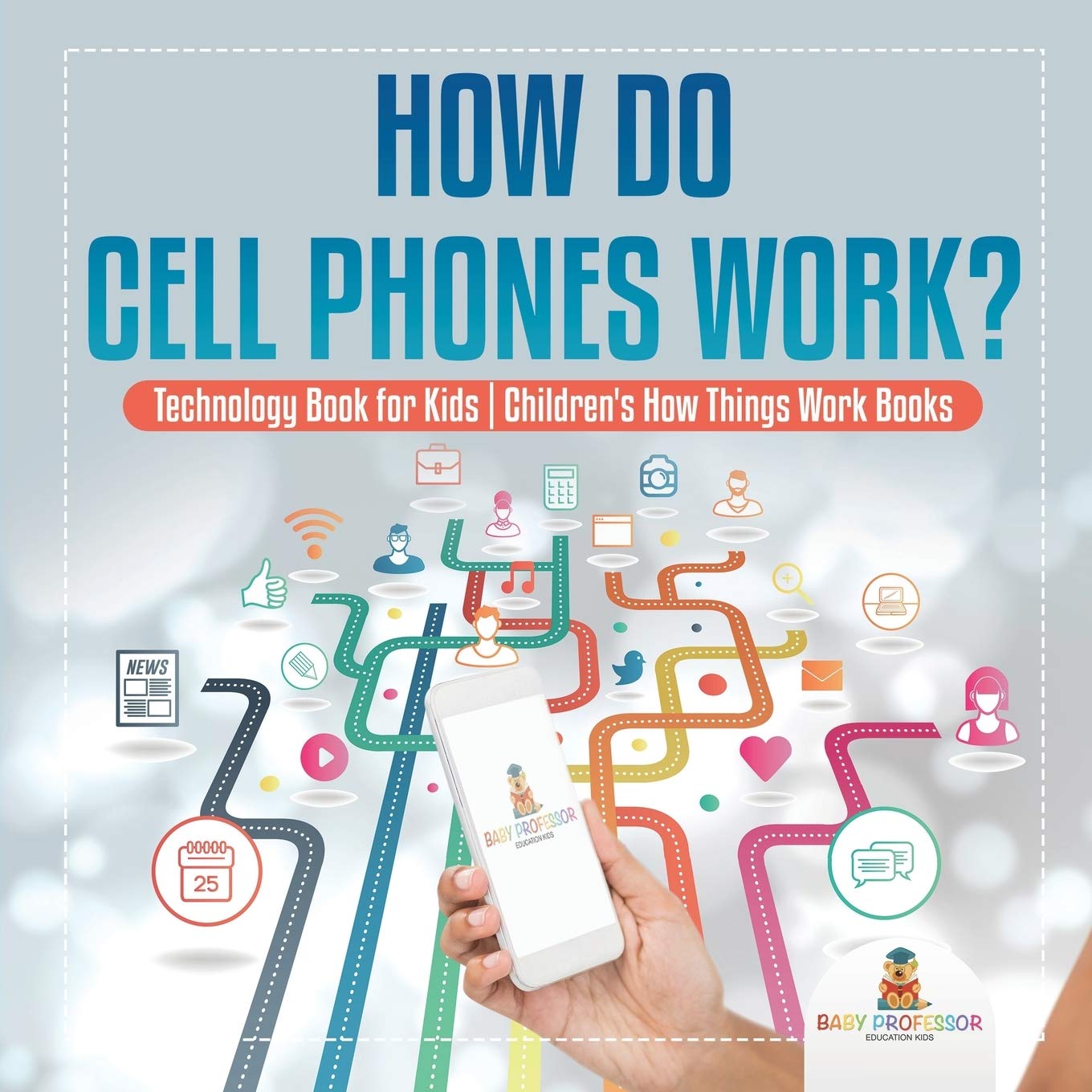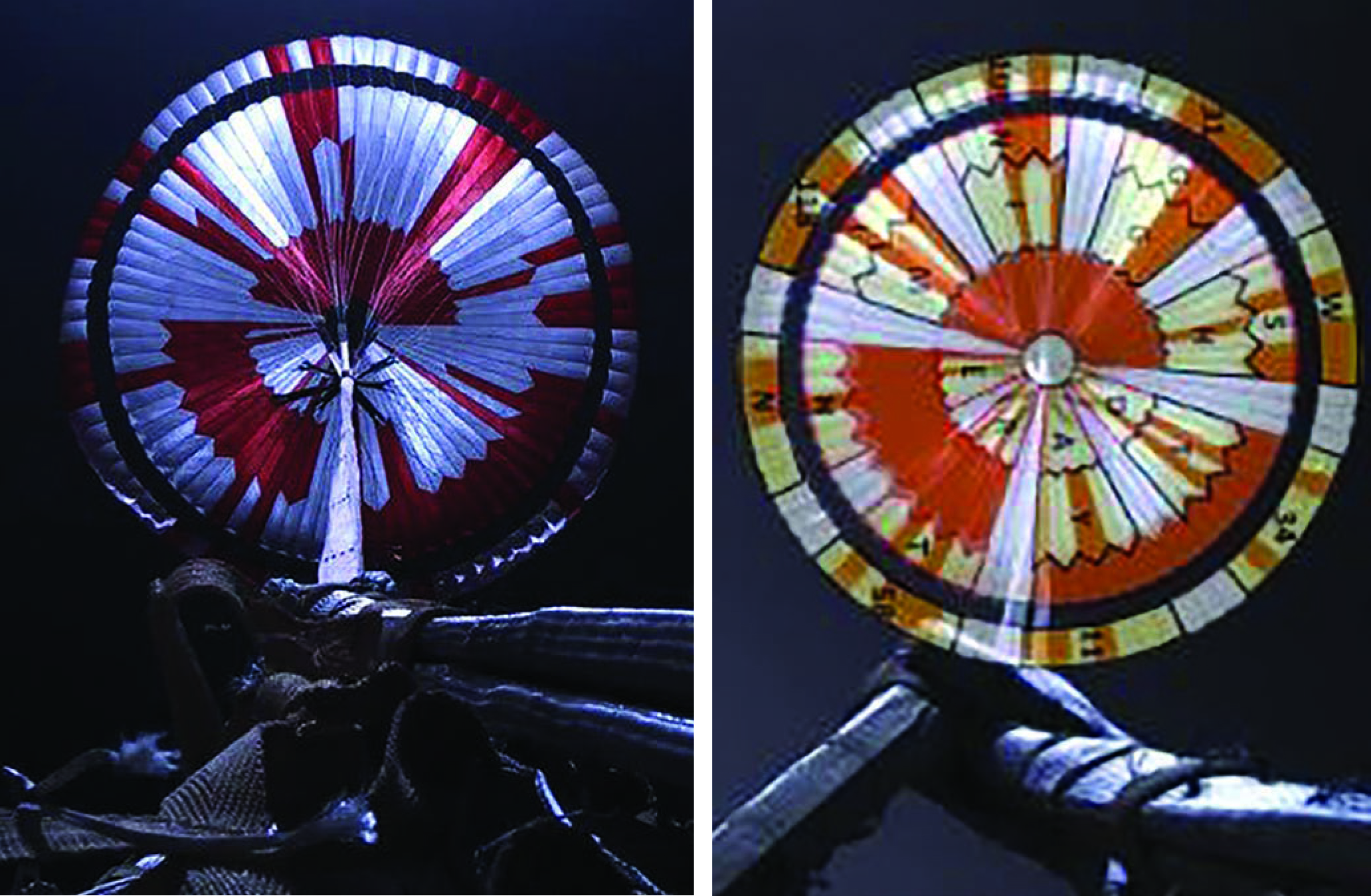teaching through trade books
Patterns and Perseverance
Science and Children—May/June 2021 (Volume 58, Issue 5)
By Christine Royce
We’ve all definitely had opportunities for using new communication tools over the last year. This month’s focus is on exactly how information is communicated through different types of waves and with different types of patterns. Both of these require some type of device to detect, decode, and present that information. Younger students examine ways that they have been able to communicate through signals and patterns, whereas the intermediate-level students examine how technology is used to communicate with the Mars Rover Perseverance.
This Month’s Trade Books

Communicating With Signals and Patterns
By Kaitlyn Duling
ISBN: 978-1731612090
Discovery Library Jr.
24 pages
Grades K–2
Synopsis:
Young readers are introduced to the different ways that we can communicate using light and sound. Examples that are provided include signals, patterns, and waves.

How Do Cell Phones Work?
Baby Professor
ISBN: 978-1541917750
Baby Professor
64 pages
Grades 3–6
Synopsis:
This Kindle text provides a clear explanation of how cell phones use radio waves to transmit information, also exploring how cell phones have transformed our lives.
Supplemental Resources
Download activity materials for K–2 at https://bit.ly/3gCii9H and 3–5 at https://bit.ly/3enfiez. Standards connections available at https://bit.ly/3xf89pd.
Grades K–2: What’s the Message?
Purpose
Students will identify different ways information is communicated and develop their own system to convey basic information.
Materials
- Communicating With Patterns and Signals
- chart paper
- pictures of objects that communicate information
- What’s My Message and My Communication System student sheets (see Supplemental Resources)
- newspapers, magazines, radio or iPad music, sounds (like a fire engine or school bell), Sign Language video.
Engage
Begin by asking students to give examples of how people communicate information and record them on chart paper. After students have had a chance to share their ideas, explain that people have a variety of ways to communicate, but some ways to convey information are understood by most people. Prompt the students by showing them pictures such as stop lights, walk/don’t walk signs, etc. (see Supplemental Resources). Showing the students one picture at a time, ask them to explain what the object is used for and also what type of information it helps to convey. After students have examined some of the different photos, ask them to generate questions that they might have about communication. Record these questions on chart paper.
Explore
Set up the following stations for students to complete during center time or conduct them as a whole-class lesson. Each station helps the students consider ways that we communicate. For each station, students are asked to identify how information is communicated, who is involved in sending the message and who is involved in receiving the message. Students can use the What’s My Message student sheet (see Supplemental Resources) to record their ideas or the teacher can do so on chart paper.
Station #1: Newspapers and magazines (Printed words) – Provide a variety of printed materials. If you have access to appropriate reading-level materials it will be better since students will be able to read the material as well. Prompt students to consider who is sending the message and who is receiving the message (and how) using questions such as, “Who created this message? Who is the one that receives this message? What do you need to do in order to understand the message?”
Station #2: Sound – Using either a radio or music on an iPad, play a song that would be familiar. Questions might include how is sound used to communicate information? In this situation, you heard a song played such as “Happy Birthday,” what are other ways that sounds are used to communicate information? What are some other examples of sounds that tell us certain types of information? Play sounds that the students might be familiar with that mean something. Examples might be fire or police sirens, school bells, or even an announcement over the school public address system.
Station #3: Visual information – In one of the stations, you saw how printed words helped to convey information. Do you think pictures or signs can convey information? What are some examples where pictures or signs are used to tell people things? What messages are shared with these example signs? (see Supplemental Resources)
Station #4: Devices – Share flashlights, a drum, telephones, and other devices that help people convey information. Ask the students to select one of these devices and explain where a message is started (one person) and how the device can be used to communicate a message to another person.
Station #5: Hand signals – Share the Please and Thank You Sign Language Video (see Supplemental Resources). Ask students how information is communicated through the signs. How is sign language similar to how we use words?
Explain
Share Communicating With Patterns and Signals with the students. Ask them to listen to the story and every time there is a spot where they identify a way information is being communicated, raise their hand. As students raise their hands, stop and ask them to explain what information is being communicated and how it is being communicated. Points within the story that they might identify include stoplights, antenna, car horns, fire engines, and bells to name some of the ways.
Once the story has been read through and students have had a chance to identify and explain where communication is happening and how, return to the beginning and discuss the following.
pp. 4–7: What are some ways people communicate when they are far apart? What are some ways that you have communicated with people who are not near you? The story shares that some ways we can communicate are through sound and light. Can you name examples where we communicate in each of these ways?
pp. 12–15: Fire engine sirens and school bells are mentioned in this part of the story. Think about times when you have been near either of these signals. What happens as you move closer to or further away from the source? Is this a good way to send messages over long distance?
pp. 16–19 There are several objects that are used to communicate a message through light on these pages. How do you think people know what the message is? What happens if people are not familiar with what the object is or the message means?
Ask the students to return to their list of questions they had at the beginning of the lesson and see which ones they can answer based on participating in the activities. Assist the students in creating a statement that connects their experiences in the investigations and the text to answer the questions.
Elaborate
Review all of the different ways that students saw that communication can occur. Challenge the students to develop their own communication method that allows them to help a student navigate a maze set up in the classroom. Allow students to work in groups or assist the class in figuring out strategies that will help communicate the following pieces of information: walk forward, stop, turn left, turn right. Students will need to consider the media or method that they will use to communicate through as well as the patterns or strategies used for each message. An example might be the use of hand signs that they would use to convey a message to another student. Students could also use a flashlight with a certain number of flashes or even pictures on signs they hold up. Allow students an opportunity to develop their communication system and explain it on the My Communication System student sheet. After they have explained what the system is, ask them to work together to navigate a maze through the classroom from the door to the front of the room where they might be asked to do three different signals. How would they change their system after they have tested it?
Evaluate
Students begin by demonstrating their understanding of how information can be communicated and different messages that might be communicated. Throughout the explore part of the lesson, they are engaging in both discourse and sensemaking as they consider several different ways information is communicated. Students connect their ideas from the investigations to the text material and ultimately apply their understanding by creating their own system to communicate information to help students solve a maze.
Grades 3–5: Communicating With Perseverance
Purpose
Students investigate different ways patterns are used to transfer information.
Materials
- Picture of Mars Perseverance Rover
- Images of Mars from Gallery (see Internet Resources)
- Prior Mars images from earlier rovers
- Understanding How We Communicate With Perseverance and Creating and Communicating Code student data sheets (see Supplemental Resources)
- pictures of different antenna
- transistor radio with antenna (important that it is not a digital radio)
- aluminum foil
- 2 cups and string for each pair of students, wax-coated string or wax-coated dental floss
Engage
Just a few months ago, NASA landed their most recent Mars rover, Perseverance. This rover and all prior rovers need to be able to communicate information gathered back to Earth and that requires the use of technology—and patterns to do so. Share with students a picture of this rover and some of the images it has sent back to Earth (see Supplemental Resources). Ask students to then look at the series of images that have been taken of Mars from prior missions (see Supplemental Resources). As they make observations, ask the students to consider the type of information that the pictures convey about Mars. As they are examining the different photos, ask them to think about ways that information can be sent between Earth and Mars. Finally, pose the question to the students, “How do we get pictures with information about Mars that Perseverance takes returned to us on Earth?” Teachers can check out the information on communications, which is shared in the Supplemental Resources.
Explore
The following investigations can be done in a station rotation or as a whole class. To examine how information can be transferred from place to place, students will examine different parts of the communication system and also how codes can be used to communicate information. As students work through the investigations, they can record their observations on Understanding How We Communicate with Perseverance student data sheets (see Supplemental Resources).
Investigation #1: Landlines
One of the ways that people have communicated is by using our voices, transferred through a landline. As students may not be familiar with an old landline phone, locate and bring in an old landline phone that can be examined by the students. If there is one that you can disassemble, all the better. Allow students an opportunity to look at and consider how a phone plugged into a wall jack could transfer information. Ask the students to set up the old string telephone where they have two different cups and a string that is tied between them. Pull the string taut and ask one student to say something in the cup and the other student to listen for the message. What happens to the message? Can they easily hear it? Take a wax-coated string or use wax-coated dental floss and repeat the activity, what happens now?
Investigation #2: Antennas and Radio Waves
Refer to the pictures of Perseverance and point out the different antennae. Ask students to consider how antennae help the rover communicate with scientists on Earth. Depending on where students live, you may need to bring in an antenna that would be used for television or radio or draw their attention to the use of an antennae. Pictures in the Supplemental Resources can be used to help illustrate what antennae are. Ask students to find a station using a transistor radio that has an antenna. As they are working to tune into a radio station, have them observe what happens if they move closer to a window or nearer to an inside wall. Prompt them to consider where the source of the radio waves might be. After students have considered what an antenna does, ask them to investigate what happens when the antennae are down instead of up. What happens when they put the antennae down and wrap the entire radio in aluminum foil?
Investigation #3: Uplinks
One of the challenges with communicating with Perseverance is where it landed and how often the Mars Orbiter is within range of communicating with Perseverance and then transmitting that information back to Earth. NASA has developed an interactive game to allow students to understand how direction is important in this process. Allow the students to play the Uplink/Downlink Game or demonstrate the game for them (see Supplemental Resources). Ask the students to explain how communication occurs between both the rover and the orbiter before it is sent back to Earth.
Explain
After students have had a chance to explore the different components that are all part of the actual process for how NASA communicates with Mars, share the following locations in How Cell Phones Work with the students and ask them to begin to discuss what they might already know, connections between the text and investigations that can be made, and additional questions that they might have. As this is a Kindle book, sections are noted as “locations” rather than pages. In each of these areas, ask students to make connections to how NASA might communicate with Perseverance as well.
Location 6: How Do Cell Phones Work? This section describes how cell phones work through radio waves. Ask students to explain in their own words how cell phones work and how they think information is transferred from one location to another. How is this similar to how NASA can communicate with the Mars rovers?
Location 8: Prompt the students to explain some of the challenges they experienced with using their string telephone.
Location 10: How do cell phones send information? What part of the electromagnetic spectrum is used?
Location 13: What is the process to transfer information when you talk into your cell phone? Why do you think it is important to have all cell phones or computers use the same code?
Location 19: Cell phones use cell towers to help transfer the information. How is this similar to the different satellites that NASA uses to communicate with Perseverance?
After sharing the book with the students, ask them to describe why radio waves are important for both cell phones and for the Mars rover.
Elaborate
Transmitting information requires a variety of technology tools and is shown with the use of communicating with the rover as described above. Another one of the exciting aspects of the most recent mission was the parachute that helped the rover land safely on the red planet and had a secret message coded into it (Figure 1, left).

The image from NASA/JPL-Caltech (Figure 1, right) has the letters on the image showing the messages. What occurred was a message and the coordinates for a building at JPL were included on the parachute using a binary code. Binary code transforms information into zeros and ones and allows letters and numbers to be created through different sequences. In this particular extension, students are asked to think about how we communicate information through code as well, albeit not binary code, which will be a bit beyond the grade level. Perseverance has to send pictures and videos back to Earth as well. These pictures are transmitted using binary code. To help students think about how codes are used for sending information, students can make up a code using shapes and colors such as triangles, squares, circles, etc., with each being a different color. Each shape/color combination would represent one letter of the alphabet and could be used to write a message. An outline sheet and also a completed code sheet if that better fits the classroom is available in the Supplemental Materials. Once students have developed and understand how to use the code sheet, ask them to write a message that could be shared with someone else or even ask a question about Perseverance such as “how long was your trip to Mars?” NASA also provides an additional message decoder activity based on the Mars Curiosity Rover mission for students to solve (see Supplemental Resources).
Evaluate
Throughout these investigations, students are learning how information can be transferred and how we use different technology and codes to do so. Initially, students are asked to explain their understanding of how we obtain information from the Mars rovers before they use investigations to connect their initial ideas to ways NASA communicates with the Mars rovers. Finally, they are asked to create their own code to represent a way that information is communicated.
Internet Resources
Christine Anne Royce (caroyce@aol.com) is a professor at Shippensburg University in Shippensburg, Pennsylvania, and past president of NSTA.
Instructional Materials Literacy Teaching Strategies


